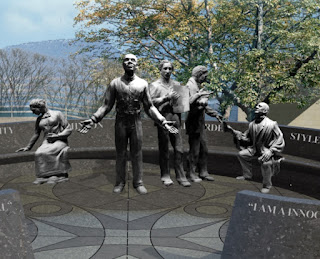Abbott Pattison - sculptor
This small bronze just caught my eye in the catalog of an upcoming auction. It has that same cheerful uplift that’s often seen in my father’s work. Midwestern men of the same generation, both were medaled for combat in WW2 and then came home to begin careers in sculpture. Both were skilled in a variety of media, though it does appear that Pattison never carved wood and my father never worked metal. The big difference is that Pattison studied art at Yale while my father studied at Olivet - a tiny progressive liberal arts college in Michigan which at that time offered an Oxford style tutorial with a curriculum of great books. The Jewish mythopoetic sculptor, Milton Horn, was one of his tutors.
Yale encouraged Pattison to become an eclectic modernist sculptor. Horn introduced my father to earlier practices. Both would end up making pieces that were buoyant and sometimes goofy.
And both appeared in the first (and regrettably last) survey of contemporary American sculpture presented by the Metropolitan Museum of Art in 1951.
The jury included Robert Beverly Hale, then the Associate Curator of American Art at the Met and still famous for his lectures in anatomy on videotape. The sculptors on the jury included: Donal Hord, Cecil Howard, Robert Laurent, Hugo Robus, David Smith, and William Zorach.
Pattison's Surrealistic, eviscerated, discombobulated man brings to mind the Chicago Monster Roster. These post-war artists, some of them veterans,ike Leon Golub, reacted strongly against the upbeat figurative idealism of Fascist, Communist, and American public sculpture.
My father's piece is more like art-deco. But it isn't merely decorative. It feels cultic enough to belong in the ancient Middle Eastern temple or palace.
Horn's memorial to the victims of the Holocaust was also included in this exhibit.
Regretfully, this was the high point of my father's career. He was hired but soon fired from the Cincinnati Art Academy. He was too independent to hold a teaching position at a reputable institution and he would get few commissions.
Pattison, however,soon became Sculptor in Residence at the University of Georgia - where he produced the 2-ton, twelve foot monument shown below:Abbott Pattison, Iron Horse, 1954
Pattison: Fountain of the Great Lakes, Oak Brook
Taft's version offered the innocent play of unclothed sorority girls at a stately masque. Pattison has updated it by making them a bit more raucous -- and possibly drunk. Are they at some kind of feminist retreat deep in the woods?




























